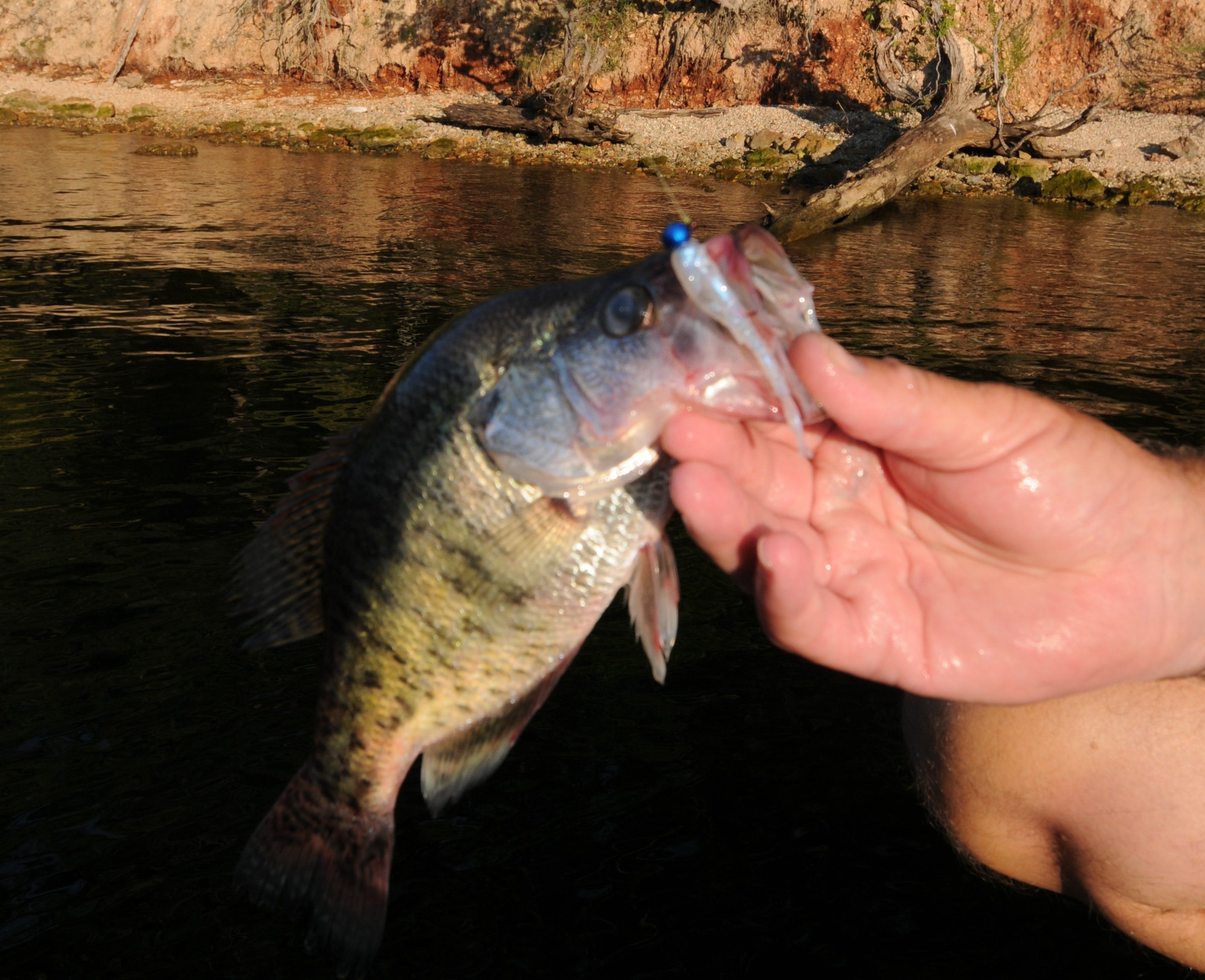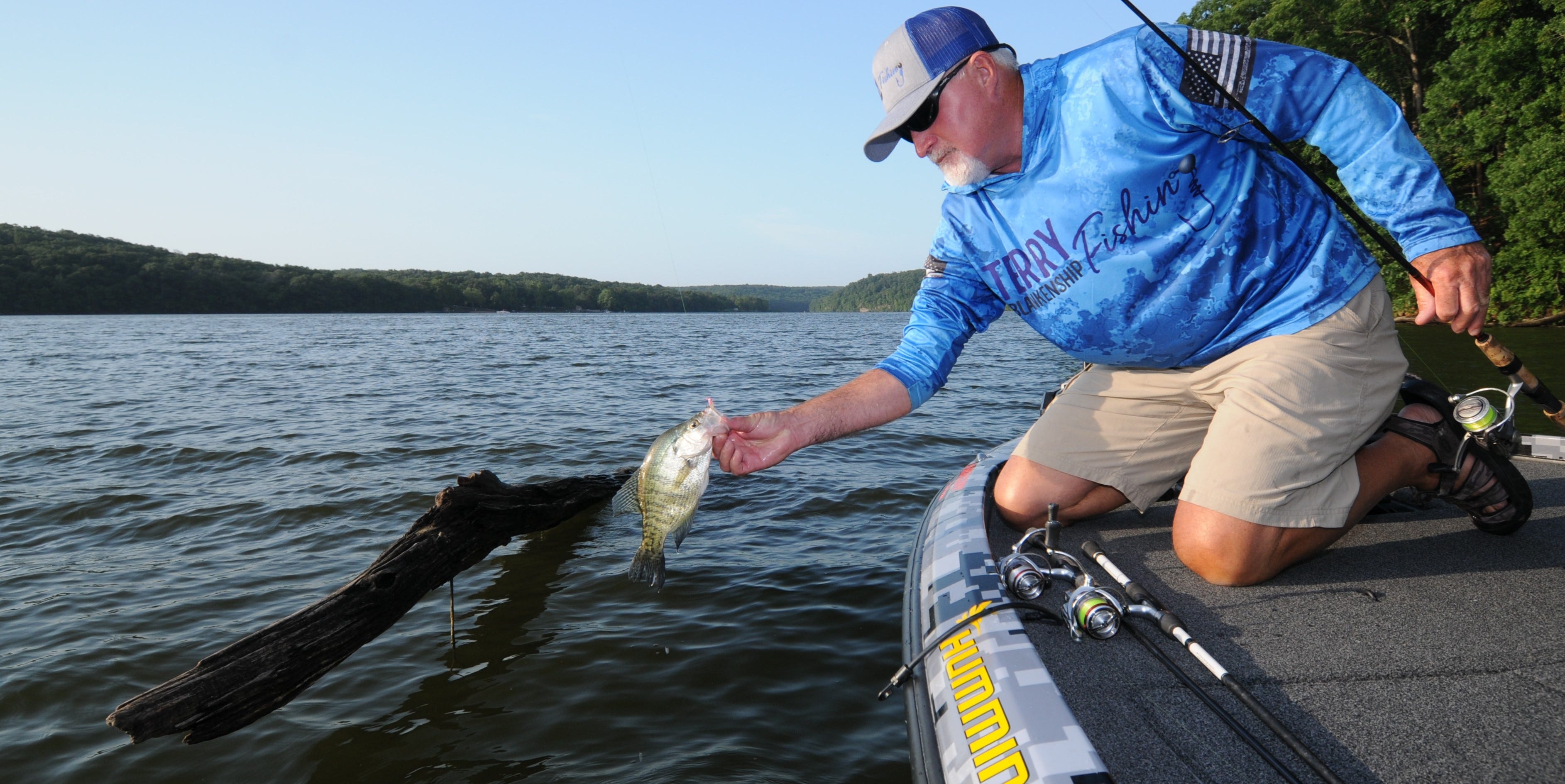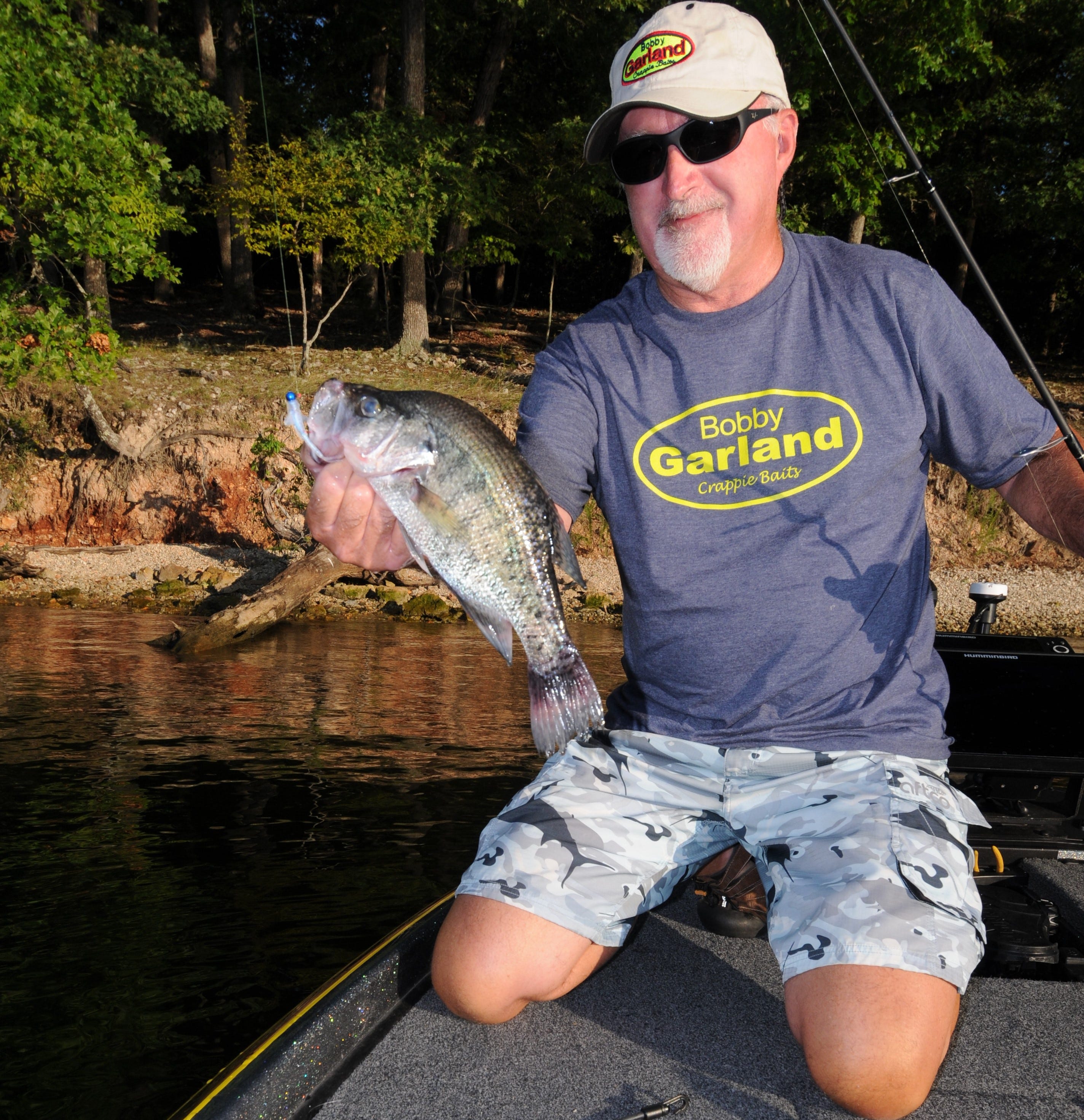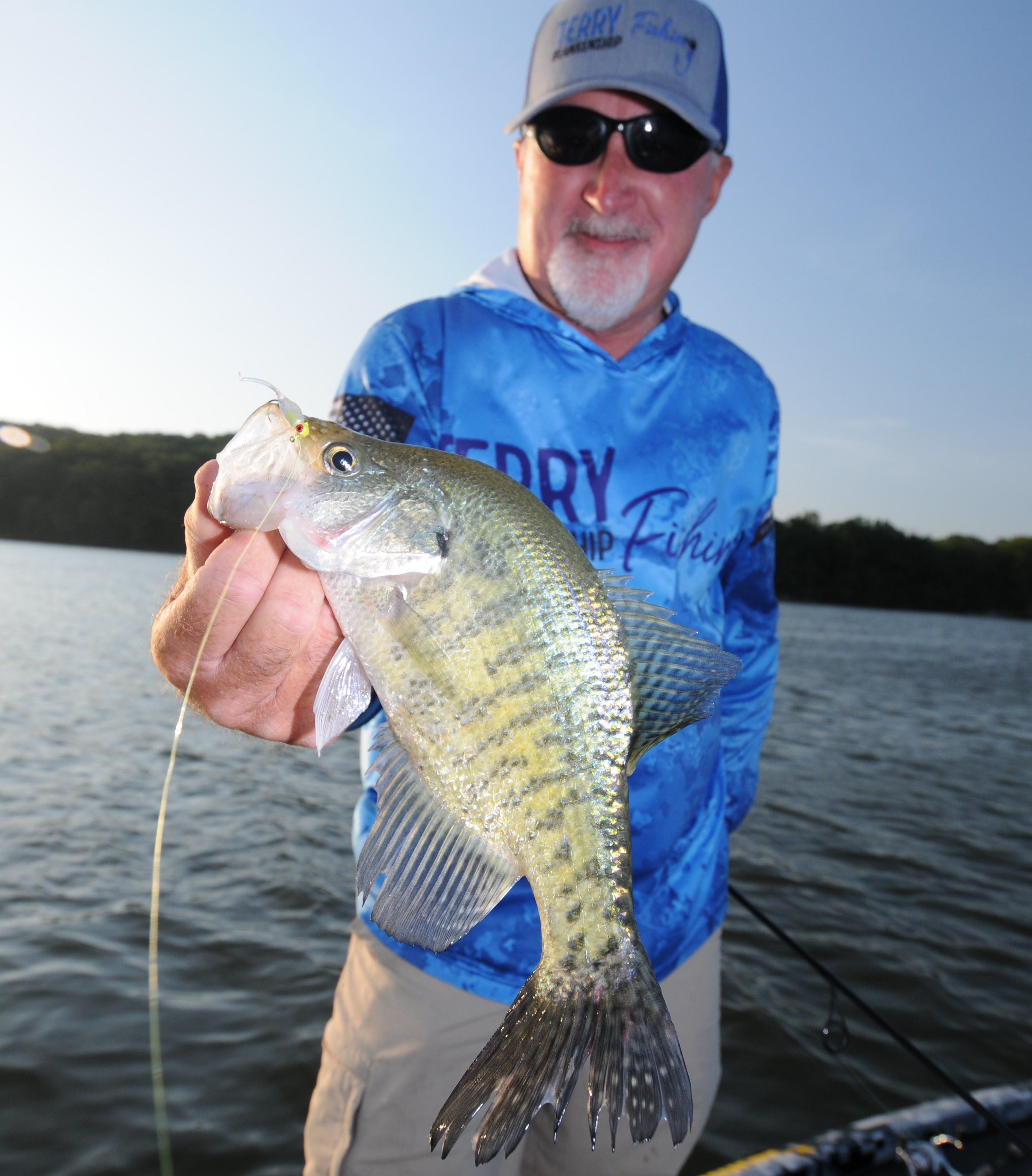- Sep 13, 2022
Pro Tips for Crappie Fishing Laydowns
When a tree topples into a lake, it transforms into a crappie haven. Learn how to work laydowns to catch the most crappie.
On dry ground, a tree provides a home for birds, squirrels and raccoons. Lying low in the water, the same tree becomes a laydown and offers horizontal cover for crappie, bass and catfish. Crappie fishing laydowns is an outstanding way to put fish in the boat late in the summer and continuing through fall. Lake of the Ozarks guide and tournament competitor Terry Blankenship frequently fishes for crappie around vertical cover he sinks in his home waters; however, he has learned crappie fishing laydowns offers a better option at times.
“Sometimes crappie want to get under something and use it for protection,” Blankenship said, explaining his reason for crappie fishing laydowns. “It is also a good place for them to ambush bait. Horizontal cover is good whenever you have really clear water and the fish aren’t real deep. I think crappie are bothered by sunlight a lot more than a lot of gamefish, so it seems like they like to get under something, especially when they are shallow.”
Crappie fishing laydowns is also productive when rains muddy the water and fish move shallow and hold tighter to the cover. Blankenship likes to use a jig and bobber setup then to “tinker around the edges and the tops of any laydowns coming off the shoreline, or if I know of a log that is slightly under open water.”
Finding the Right Laydowns


Blankenship’s ideal horizontal cover varies according to whether it is an offshore log or laydown along the bank.
“A lot of times if I can find a slick log that has a root wad on it, the fish will use that root wad for the heavy cover, and whenever they are not necessarily being under there for protection they will just follow that log up to whatever depth the log comes up to, whether it is a foot deep or down as deep as 15 or 20 feet,” Blankenship said.
“Any log coming off the bank sometimes can hold fish,” Blankenship said. “It won’t matter so much as to how brushy the laydown is. In most cases, you would catch more fish, though, if there are some limbs and stuff sticking out than just one single limb.”
The Missouri angler relies on his Humminbird electronics side and down imaging features to find laydowns holding the most fish. “Normally I won’t fish a laydown unless I see the fish there,” he said. If he is scouting a deep offshore laydown, Blankenship will idle over the top of the log and scan the cover with down imaging to pinpoint crappie. When scanning shallow laydowns, Blankenship searches for crappie with side imaging.
Once he finds a log loaded with crappie, Blankenship drops his trolling motor and scans the horizontal cover with his 360 Mega Live forward-facing sonar. “A lot of times I am looking for activity,” he said. “Once I get it dialed in on the direction of the fish it will tell me how far they are out and how deep they are, I can then watch my bait and I can actually tease the fish.”
Lures & Presentations


Blankenship favors a couple of Bobby Garland Crappie Baits for probing horizontal logs. “The Baby Shad Swim’R is probably one of my favorites year-round,” he said.
When shad tend to grow bigger in the fall, Blankenship switches from 1 1/2- or 2-inch baits to the 3-inch Slab Slay’R to match the hatch.
Although his opportunities to fish the newly introduced Mayfly around logs has been limited, Blankenship believes the new bait will be productive because it mimics the insects that hang around wood and presents a unique look to crappie.
He mentioned Blue Ice and Monkey Milk as the primary colors for his laydown baits. He also likes Bluegrass and Bayou Booger.
Blankenship believes he catches more crappie by keeping his lure about the fish rather than letting it fall below them, so it is critical for him to know how certain sizes of jigheads fall at certain rates. “I throw a 1/16-ounce jighead 80 to 90 percent of the time because I know how fast it falls, and I use 6-pound test line,” he said. “Whenever I use that combination, I know pretty much how fast the lure is falling.”
The distance Blankenship positions his boat from the laydown depends on the depth of the log and how tight crappie are holding to the horizontal cover. “I like to get a little closer to the laydown if it is deep (12 to 20 feet), but if it is shallow, I will back off from it a little bit and make longer casts but still try to stay above the fish.”
Blankenship will move his boat within pitching distance if he sees crappie buried in the log’s root wad or limbs and present his jig vertically to the fish. If he notices crappie are suspended above the limbs or trunk of the laydown, he backs off the cover and casts to the fish. He counts down his jig as it falls and then tries to keep the lure swimming above the fish.
“Typically, I try to cast a little past where the fish are at, and then I will try to get the jig down to within a few feet of the top of the crappie,” he said. “Then I will keep my presentation horizontal and come across the top of the fish. If that doesn’t work after a few casts, then I will change it up a little bit and let the lure go a little bit deeper and give it a little more radical retrieve.”
Blankenship starts swimming his lure with a slow and steady retrieve. If the fish ignore his offering, Blankenship mixes his retrieve with some small pops, which he achieves by pausing the bait to let it fall briefly and then brings it up quickly with a few cranks of his reel.
Blankenship’s vertical presentation also depends on keeping his jig above the fish. “I call it the Snickers candy bar trick, where I will just let it sit there,” Blankenship said. “I can’t resist a Snickers candy bar after it has been sitting there for a while. So that is like what happens whenever I just leave the lure sit there. A lot of times if those fish are within a foot or two of that bait you will start noticing them coming up, and if you see one shooting up you better get ready because that fish is going to hit it.”
If vertical cover such as brush piles and standing timber fail to produce, horizontal logs offer you another option to catch crappie deep or shallow.
Laydown Locations Through the Seasons


Terry Blankenship finds crappie around horizontal logs along various structures throughout the year.
- Laydowns along bluffs are best in the summertime when crappie can move up shallower on the horizontal cover in the mornings to feed and drop down to cooler, deeper water in the heat of the day.
- When baitfish and crappie move shallow in the fall, look for laydowns in the backs of creeks and shallow bays.
- Bluff laydowns also hold crappie in early winter when cold fronts make crappie sluggish, and the fish descend to the deepest parts of the wood cover.
- During the middle of winter, crappie can be found at depths as shallow as 4 feet around laydowns dropping into the channel in the backs of some creeks. “The water stabilizes sometimes as winter progresses and causes crappie to move there mostly because the baitfish move there too,” Blankenship said.
- Offshore horizontal logs in shallow coves and bays are great spots for crappie in late winter. “There is something going on there where that water is warming up and the fish are getting some sun,” Blankenship said. “I will assure you there are batfish there which is the reason why crappie are there too.” He suggests fishing a jig and bobber setup in this situation.





